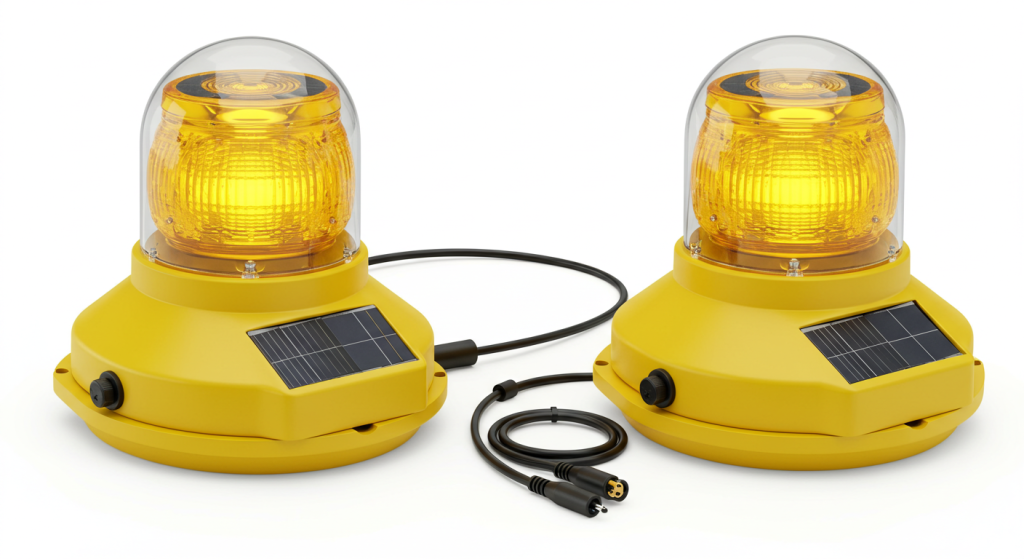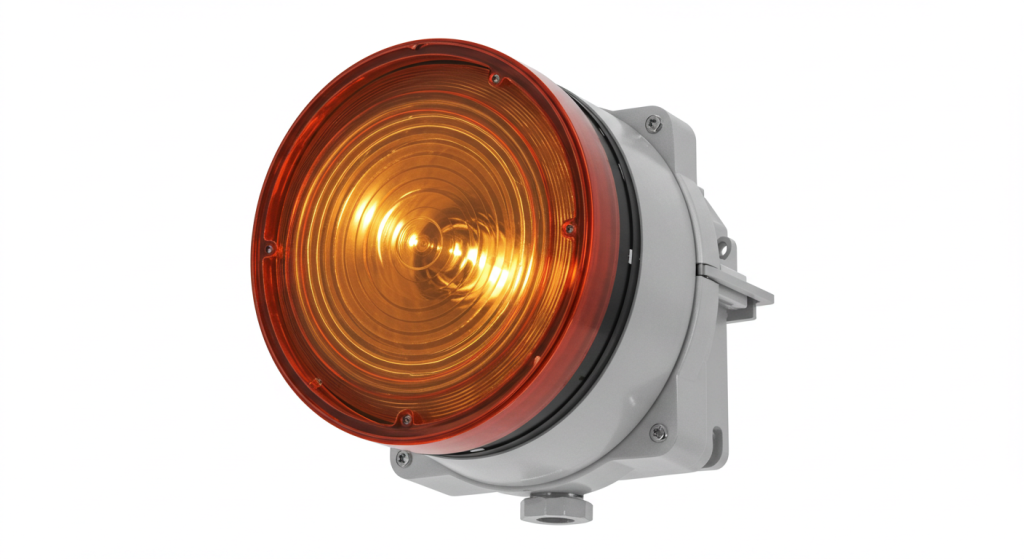The safety and efficiency of air travel depend heavily on a network of ground-based systems that support aircraft operations. Among these critical systems, airfield ground lights stands out as a vital component, guiding pilots during takeoff, landing, and taxiing, especially in conditions of low visibility or darkness. This article will delve into the complex world of airfield ground lights, exploring its various components, their functions, and the factors that influence their implementation and maintenance. We aim to provide a comprehensive understanding of how these lighting systems contribute to the safety and reliability of air traffic.

Understanding the Purpose of airfield ground lights
The primary purpose of airfield ground lights is to provide pilots with essential visual cues, allowing them to navigate safely and efficiently within the airport environment. This lighting system is crucial for guiding aircraft along runways, taxiways, and aprons, ensuring accurate positioning during all phases of flight.
Effective airfield ground lights is particularly important during nighttime operations, in low-visibility conditions, and under adverse weather conditions. These systems not only enhance safety but also enable airports to operate around the clock, maintaining seamless air traffic flow.
Key Components of Airfield Ground Lighting (AGL)
Airfield ground lighting (AGL) encompasses a wide range of lighting systems, each designed for specific purposes within the airfield:
Essential Components of Airfield Ground Lighting:
- Runway Lights: Mark the edges and centerlines of runways, guiding aircraft during takeoff and landing.
- Taxiway Lights: Define the edges and centerlines of taxiways for safe navigation.
- Approach Lighting Systems (ALS): Provide visual guidance for aircraft approaching the runway.
- Threshold Lights: Indicate the beginning of the usable portion of the runway.
- Runway End Lights: Mark the end of the runway, providing a clear visual indication.
- Apron Lights: Illuminate the areas where aircraft are parked and serviced.

Runway Lighting: A Detailed Overview
Runway lighting is a critical element of airfield ground lights, guiding pilots during takeoff and landing. These systems provide clear visual cues, enhancing safety and efficiency.
Types of Runway Lights:
- Runway Edge Lights: Typically white lights that delineate the edges of the runway.
- Runway Centerline Lights: White lights that run down the center of the runway, turning to alternating red and white, then all red, as the aircraft nears the end of the runway.
- Touchdown Zone Lights: White lights that are embedded in the runway surface near the beginning of the landing zone.
- Threshold Lights: Green lights indicating the beginning of the usable landing portion of the runway.
- Runway End Lights: Red lights marking the end of the runway.
Approach Lighting Systems (ALS)
An Approach Lighting System (ALS) is a critical part of airfield ground lights, which extends outward from the runway, allowing pilots to smoothly transition from instrument flight to visual flight as they approach the runway. These lighting systems are vital in guiding aircraft during the final phases of the approach and landing procedure.
Key Features of Approach Lighting Systems:
- Visual Guidance: Provides visual cues that help pilots align their aircraft with the runway.
- Transition Aid: Assists pilots in transitioning from instrument flight to visual flight.
- Low Visibility Aid: Crucial for operations in low visibility conditions and nighttime.
- Configuration Variability: ALS configurations vary depending on the category and approach requirements.

Taxiway Lighting: Guiding Aircraft on the Ground
Taxiway lighting is another critical aspect of airfield ground lights that guides aircraft along taxiways. These systems provide pilots with clear indications of the designated pathways to move between the runway and other areas of the airfield.
Key Components of Taxiway Lighting:
- Taxiway Edge Lights: Blue lights that mark the edges of the taxiways.
- Taxiway Centerline Lights: Green lights that mark the centerlines of taxiways.
- Taxiway Lead-On Lights: Alternating green and yellow lights to indicate the route onto a runway from a taxiway.
airfield ground lights Colors and Their Meanings
The colors of airfield ground lights are standardized to convey specific meanings to pilots:
Standard Colors in airfield ground lights:
| Color | Meaning |
|---|---|
| White | Used for runway edge lights, centerline lights, and touchdown zone lights. |
| Red | Used for runway end lights, centerline lights when nearing runway end, and obstruction lights. |
| Green | Used for runway threshold lights and taxiway centerline lights. |
| Blue | Used for taxiway edge lights. |
| Yellow | Used for taxiway lead-on lights and some types of approach lights. |
Understanding these color codes is essential for pilots navigating the airfield, especially at night and in low visibility.
The Importance of Approach Lighting Systems
The Approach Lighting System (ALS) is a critical part of airfield ground lights, and provides pilots with vital visual cues to smoothly transition from instrument-based approaches to visual landings. These systems, by providing visual references, allow pilots to maintain correct alignment and descent during the critical final approach phases.
ALS is particularly vital at airports that experience adverse weather and nighttime operations. These lighting systems are configured for different approach categories, based on the capabilities of the aircraft and the surrounding environment of the airport.
The Role of Lighting in Pilot Operations
Pilots heavily rely on airfield ground lights for safe and efficient navigation, especially at night and during adverse weather. The lighting systems are designed to provide clear and unambiguous visual cues, guiding the pilot as the aircraft approaches the airport.
Pilot reliance on airfield ground lights:
- Runway Identification: Identifying the correct runway for landing or takeoff.
- Approach Guidance: Maintaining proper alignment and descent during the approach.
- Taxiing: Navigating safely along taxiways and to parking areas.
- Situational Awareness: Enhancing overall situational awareness during airfield operations.
- Night Operations: Ensuring safe operations during nighttime conditions.
- Low Visibility Operations: Providing critical guidance when visibility is reduced.
Without proper airfield ground lights, safe and efficient flight operations would not be possible.
Factors Affecting airfield ground lights Costs
The cost of airfield ground lights systems can vary greatly, based on the factors, including the type of system, the size of the airport, and any regulatory requirements. Factors to consider when assessing the costs include:
Factors Affecting airfield ground lights Costs:
- Type of System: High intensity runway systems will cost more than lower intensity lights.
- Airport Size and Complexity: Larger and more complex airports will require more lighting, driving up cost.
- Installation Costs: Trenching, wiring and installation require specialized teams and equipment.
- Maintenance Requirements: Ongoing maintenance and replacement costs are a factor in the overall cost.
- Regulatory Standards: Systems must adhere to strict regulations, which may influence design and cost.
- Technology Used: Newer LED systems tend to have a higher initial cost but offer long-term energy savings.
airfield ground lights Replacement Costs
The cost of replacing or upgrading airfield ground lights equipment can be significant, and can include the cost of purchasing new lights, installing the new lights, and removing old and obsolete equipment.
The total cost of replacement will be impacted by several factors including the size of the system, the types of lights being replaced, and local labor rates. Proper planning and budgeting are crucial for these types of projects.
The Transition to LED airfield ground lights
The transition to LED technology in airfield ground lights has brought numerous benefits, primarily in terms of energy efficiency and longer lifespans. LED systems consume less power and require less frequent replacement, significantly reducing long-term operating and maintenance costs.
Key Benefits of LED airfield ground lights:
- Energy Efficiency: Lower power consumption leads to lower energy costs.
- Long Lifespan: Requires less frequent replacements, reducing maintenance costs and downtime.
- Improved Visibility: Provides better light quality and visibility for pilots.
- Reduced Maintenance: Less frequent maintenance interventions are needed.
- Environmental Impact: Lower power consumption leads to lower greenhouse emissions.
Requesting Lighting at Airports
Pilots can request airfield ground lights systems at airports, particularly at non-towered airports or during hours when the control tower is not in operation. These requests are usually made through the communication radio and the proper frequencies.
Common Lighting Requests by Pilots:
- Runway Lighting Activation: Requesting the activation of runway lights for landing or takeoff.
- Approach Lighting Activation: Requesting ALS for assistance with approaches.
- Taxiway Lighting Activation: Requesting taxiway lighting for safe ground navigation.
- Heliport Lighting: Requesting activation of heliport lighting.
Pilots must follow the proper communication procedures and frequencies to ensure they are getting the required lighting systems at the correct time.
The Future of airfield ground lights Technology
The future of airfield ground lights technology is focused on improving efficiency, reducing costs, and enhancing overall safety. Emerging trends include:
Emerging Trends in airfield ground lights:
- Smart Lighting Systems: Incorporating sensors and automation for intelligent lighting management.
- LED Technology: Continued development of more efficient and longer lasting LED lighting systems.
- Remote Monitoring: Allowing for remote monitoring of systems to catch issues early.
- Solar Powered Solutions: Integrating solar technology to reduce energy consumption.
- Integration with Navigation Systems: Tighter integration with GPS and other navigation aids.
Conclusion
airfield ground lights is a critical element of the aviation infrastructure, providing essential visual guidance for pilots during all phases of flight. From runway and taxiway lighting to complex approach lighting systems, these components work in harmony to ensure safety and efficiency, especially during low visibility and nighttime operations. The transition to LED technology, combined with advancements in smart systems, is driving the evolution of these vital systems.
The proper implementation, maintenance and operation of airfield ground lights is critical to maintaining safe and efficient air traffic. As technology continues to evolve, airfield ground lights will remain at the forefront of innovation and will continue to enhance safety and efficiency for both commercial and private aviation.
The future of airfield ground lights will depend on an increasing understanding of how best to design and operate these systems to meet the complex needs of aviation and ensure a safe and efficient future for air traffic worldwide.